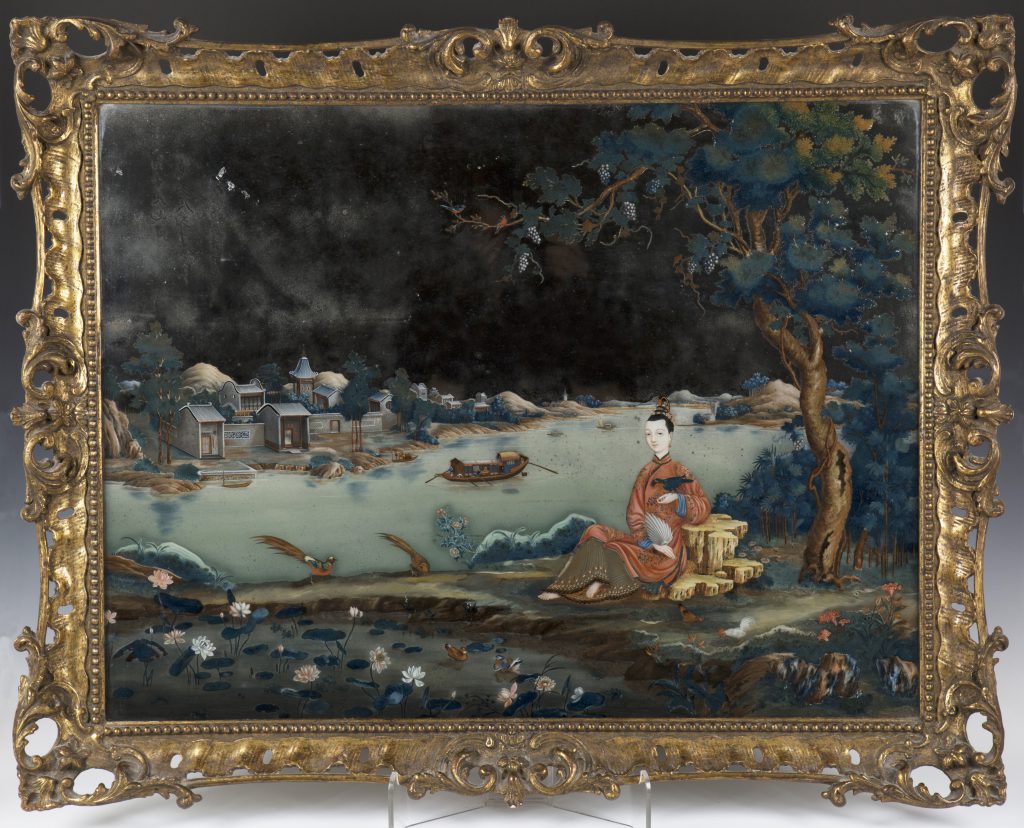
In the 17th and 18th centuries mercantile trade exposed the West to Chinese decorative art and, perhaps most importantly, Chinese porcelain. It had a profound influence on English tastes.
In England Chinese motifs were often incorporated into our own decorative schemes like those at the Royal Pavilion in Brighton.
The £34,000 fine 18th century Chinese export reverse mirror glass painting illustrates this taste and has just been sold at Toovey’s. It is exceptionally well painted with a lady seated on a rock beside a lotus pond with conjugal pairs of pheasants, mandarin ducks and chickens; beyond a pleasure barge processes up the river with an opulent residence on the far shore.
Reverse glass paintings occupy a special position in Chinese art bringing together the genres of Chinese export art, glass working and the painting of idealised beauty. The strong use of colours and exotic flavour ensured their fashionable place in English country house collections during the 18th and later centuries.
In the 20th century Chinese export porcelain and objects from the 17th and 18th centuries once again drew the attention of western collectors.
These interests were reflected in the important single-owner collection from London which has just realised hundreds of thousands of pounds at Toovey’s. One of the features of the collection were a number of fine, rare export porcelain colourful animal, bird and human figures.

Amongst these was a pair of Chinese famille rose enamelled export porcelain figure groups depicting maidens seated in a typical pose with spaniels and marvellous pink phoenixes. 21.5cm high they realised £19,000. They dated from the early Qianlong period (1735-1796) and were fitted with gilt brass candle holders and drip pans. The phoenix, or fenghuang, was the Empress of Birds in Chinese mythology signifying beauty, grace, virtue and the unity of yin and yang.
To understand the importance of this pair of figures it is perhaps helpful to note that a similar pair of figures are to be found in the exceptional Copeland Collection at The Peabody Museum, Salem, USA. The Copeland Collection is known internationally for the superb quality and impressive variety of its many rare pieces. It was put together from 1937 by the American collector, Mrs Lammot du Pont Copeland.
These figures are superb aesthetic objects expressing the form, proportion, detailed decoration, and distinctive modelling that characterize the work of a master potter. They represent the cross-cultural influences and trade between East and West giving a valuable insight into Chinese perceptions of western taste in the 18th century. Being expensive to make and ship these fragile figures were primarily made to order for wealthy private collectors and are therefore rare.
Demand for export pieces like these remains as strong amongst western collectors as it does amongst Chinese. If you would like advice on your Chinese objects Toovey’s Asian Art specialist, Tom Rowsell, can be contacted on 01903 891955 or by emailing auctions@tooveys.com.
By Rupert Toovey, a senior director of Toovey’s, the leading fine art auction house in West Sussex, based on the A24 at Washington. Originally published in the West Sussex Gazette.